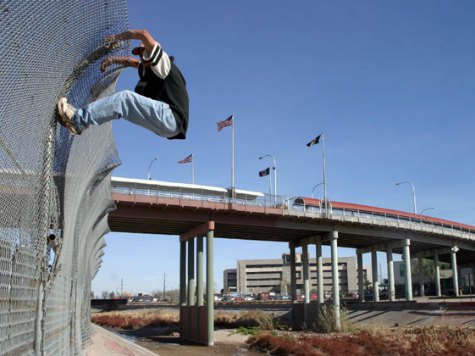In the past few weeks, the Obama administration’s oft-repeated contention that “the border is more secure than ever” has been exposed for the fraud it always was.
While the invasion by tens of thousands of so-called “unaccompanied illegal alien children” has been the most palpable evidence to the contrary, there is a far greater worry: The threat posed by swelling numbers of drug- and sex-traffickers, gang members, and suspected jihadists who are taking advantage of the border’s porousness, and the diversion of those charged with patrolling it due to the influx of desperately needy kids.
Incredibly, amid all the talk about securing the border, the billions already squandered on ineffectual real and virtual fences and the additional sums now in prospect, the periodic beefing up of Border Patrol, National Guard, and other law enforcement personnel, etc., one at-least-partial remedy to this threat has been largely overlooked.
For four years under Governor Rick Perry’s administration, border sheriffs in Texas, the State’s Department of Public Safety, Border Patrol agents, and other federal officials were able to utilize an array of military-grade video cameras to monitor key crossing points along the Texas-Mexico frontier. The patented system known as “BlueServo” offered users high-quality, long-distance all-weather, day/night imagery of the movement of people, boats, contraband, and other goods across large swaths of the South and West Texas borders.
Such video has helped achieve a 92% rate of interception of individuals crossing the Rio Grande and elsewhere illegally. In contrast to the utility of less expensive, but far less capable “deer cameras,” the products of BlueServo’s extremely robust cameras has been successfully used in court to prosecute and secure the deportation of the perpetrators.
For example, BlueServo cameras have proven their worth particularly in areas of the Rio Grande Valley that constitute the principal legal transit points across that river frontier. The system has detected and helped in the apprehension of individuals making their way illegally into the country, in some cases literally under the noses of customs personnel manning those posts. Importantly, those are not the youngsters seeking out Border Patrol officers to whom they have been instructed to surrender. Rather, they are typically the sorts of dangerous, criminal illegal aliens we want to make sure are not able to get here.
The power of the BlueServo system is enormously enhanced by a unique feature: The video feed from the cameras is posted in real-time on the Internet. As a result, over its years of operations, more than 1.5 million sets of online eyeballs around the world helped authorities monitor what was happening on the border.
With the click of a mouse, the volunteer monitors could alert appropriate law enforcement and other agencies to what they were observing. The Border Patrol or local sheriffs could then evaluate what was being reported to determine whether it warranted dispatching officers to apprehend the suspects. It thus represented a tremendous force-multiplier for those charged with keeping us safe.
The bad news is that, back in the day when the border was ostensibly “more secure than ever,” Homeland Security budget cuts forced the Perry administration to stand down BlueServo. That remains the case today, despite the strenuous appeals of the Texas Border Sheriffs Coalition – many of whose members, interestingly, are Democrats and Hispanics – who prize the extraordinary contribution the system made to their “situational awareness.”
The good news is that the BlueServo cameras are still in place and can be reactivated within a week or two. The cost is an incredibly affordable $2 million per year. A further $3 million would allow the number of the system’s cameras to be expanded in parts of the Texas border not currently under their surveillance. An estimated $10 million would allow key stretches of the Arizona and New Mexico frontiers to be put under BlueServo coverage, as well.
Before another dime is appropriated to address the appalling consequences of the border insecurity and invitations to exploit it that have been the Obama administration’s legacy to date, money must be found to bring back on-line BlueServo’s proven, extremely cost-effective and clearly needed capability.
Gov. Rick Perry has made clear his determination to secure the Texas border. The obvious place to start is with the BlueServo Solution. If he cannot find the relatively paltry sum required to restart this system and expand it, then Washington must do so. And while they are at it, federal executive and legislative branch officials should move heaven and earth to get BlueServo up and running wherever needed in the other states that abut Mexico, as well.
The technical term for this strategically necessary, highly leveraged and exceedingly cost-effective response to the present, needless and increasingly dangerous border invasion is that it’s a “no-brainer.”

COMMENTS
Please let us know if you're having issues with commenting.